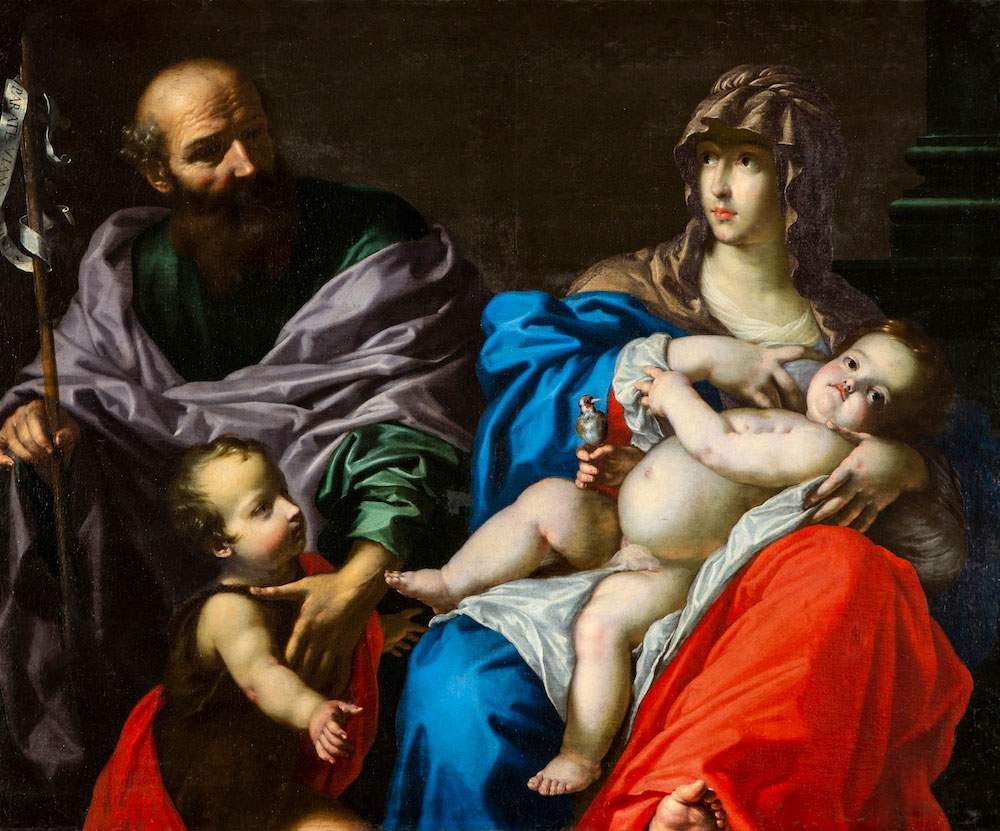Important 17th-century Florentine painting discovered in a church in a New York suburb
An important painting by Cesare Dandini (Florence, 1596 - 1657), a Holy Family with St. John the Baptist, has resurfaced in New York by pure chance: the manner in which the canvas has resurfaced has something of a whimsical quality. An art history professor, Thomas Ruggio, from Iona College, a private Catholic school in New York City, was in the Church of the Holy Family in New Rochelle, a suburb of the metropolis located north of the Bronx, and noticed the presence of the painting, which is of exceptional quality. An unusual presence for a suburban church: so the professor took some photographs and shared them with some U.S. and Italian colleagues, who confirmed what he had immediately thought, namely that he was standing before a splendid work of the Italian seventeenth century. And it’s funny to think that the work can also be seen in some of the photographs posted by the church on its Facebook page: only no one ever paid any attention to it, and evidently none of the worshippers ever thought that that could be a work produced in seventeenth-century Florence.
“I immediately realized that a journey was beginning,” Ruggio told the ABC 7 New York news outlet (the first to report the news), “because I immediately realized that it was an Italian work from the Baroque period. So I immediately started taking some bad pictures with my cell phone.” After some research and following a comparison with colleagues, Dandini’s name emerged, and indeed the canvas, a typical example of the elegance and composure of seventeenth-century Florentine painting, can be well placed in the context of a conspicuous production of which other paintings are part that, with the New Rochelle canvas, share several elements, with in particular the group of the Madonna and Child variously replicated.


This is the case, for example, with the Holy Family in the Hermitage in St. Petersburg, or the Charity preserved in the Metropolitan in New York: the Madonna (the allegory of Charity, in the case of the Met painting) is depicted with her face in three-quarters, facing away from the baby Jesus, who is held on her lap by his mother. The baby is in a precarious position above her knees and looks curiously at the viewer, turning away from his mother’s breast, which is offered to him by the Virgin and held by her between his index and middle fingers. In the New Rochelle variant, which seems to be distinguished (at least from the photos) by its dazzling iridescence, appreciable in the robes of all the protagonists, by the naturalism of the goldfinch resting on Jesus’ hands, and by a greater polish than in other versions, the figures of St. Joseph (holding the staff with the scroll bearing the famous passage from Isaiah Vox clamantis: in deserto parate viam Domini, later referred to the Baptist) and St. John appear on the left.
“I think this is the same work published several times, starting with an article by Luciana Cusmano in 1972, many years ago in Valladolid,” explained Professor Sandro Bellesi, art historian and leading expert on Cesare Dandini, whose catalog raisonné he edited, published by Artema in 1996. “The latter is known only in an old and ugly black and white photo that Mina Gregori gave me. The canvas published by the American scholar looks a little reduced from the parts but it looks more like an editorial cut. It would be important to know since when the canvas has been in the American church to remove any doubt.”


Art historians, reports ABC 7 News, gave this painting as missing, but it has apparently been in New Rochelle for about sixty years. “The former pastor, Monsignor Fitzgerald,” explained Dennis Keane, the pastor, “went I think to London and went through several galleries because he wanted to get some paintings to put in the church. He purchased two of these paintings in a gallery, but we don’t know the name of the gallery.” Later Keane, speaking to the press again, corrected himself and reported the name of the exact place where the paintings were purchased, thanks to resources donated by a benefactor: not London, but Rome. There is therefore talk of a canvas that is supposed to have passed through the antiquarian market in Rome probably in the 1960s, according to what Keane reported.
Meanwhile, for the next three months, the work will be on loan precisely to Iona College in New York, where it can be studied by experts. In addition, given that it is most likely a work of great value (no estimates have yet been made nor has an appraisal been done on the work, but if it were to be confirmed that it is indeed a work by Cesare Dandini, we could be talking about five-figure figures: the record sale of a Dandini painting, which took place in 2000 in a Sotheby’s auction, was $753,530), the Church of the Holy Family in New Rochelle has already begun to study a plan to equip the painting with the necessary security systems.
 |
| Important 17th-century Florentine painting discovered in a church in a New York suburb |
Warning: the translation into English of the original Italian article was created using automatic tools. We undertake to review all articles, but we do not guarantee the total absence of inaccuracies in the translation due to the program. You can find the original by clicking on the ITA button. If you find any mistake,please contact us.




























